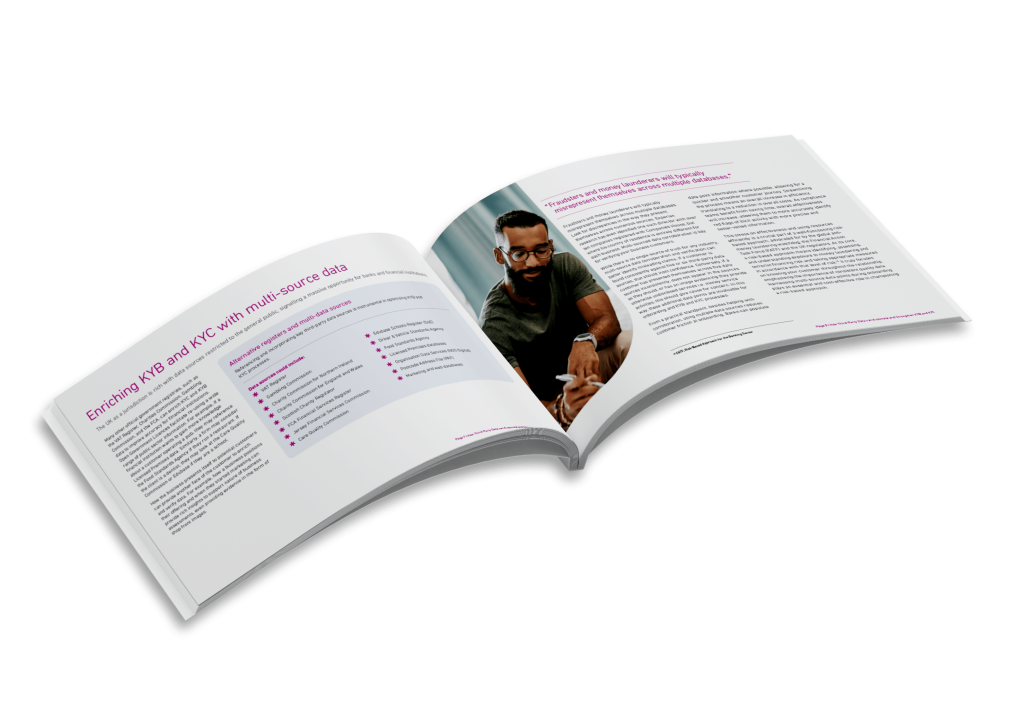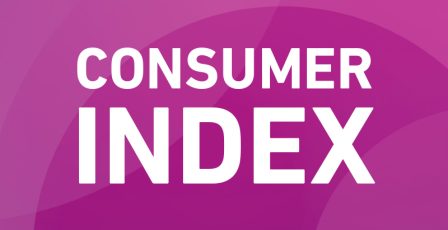Many firms spend upwards of £100m on remediation activity per year:the right tools, like third-party data, can help make it more efficient and cheaper
The UK is front and centre when it comes to persistent and evolving financial crime threats and is widely reported as a global hub for money laundering.
What more can financial institutions do to protect themselves? And more practically, how can critical parts of the anti-financial crime workflow be optimised?
This paper addresses some of the challenges with conventional Know Your Customer (KYC) and Know Your Business (KYB) methods in a UK context while proposing a complementary solution for the compliance toolkit.
While there is no single source of truth for any industry, multi-source data corroboration and verification can better identify misleading claims.
If a customer is found consistently against five or six third-party data sources, that should instill confidence. Conversely, if a customer has presented themselves across five data sources inconsistently, does not appear in the sources as they should, or has an image evidencing they provide otherwise undisclosed services i.e. money service activities, this should give cause for concern.
In this way, these additional data points are invaluable for onboarding and KYB and KYC processes.
Spotting dirty money
We detail the common money laundering red flags for businesses.
Enriching KYB and KYC with multi-source data
Referencing and incorporating key third-party data sources is instrumental in optimising KYB and KYC processes.
Optimising financial crime controls with third-party data
We look at onboarding and remediating with third-party data.
In this white paper, we cover:

Spotting dirty money
How to spot money laundering red flags for businesses.
Enriching KYB and KYC with multi-source data
Why multi-sourced data corroboration is key for verifying your business customers.
Optimising financial crime controls with third-party data
The considerations around onboarding and remediation.
Continuous KYC and KYB
How to actively manage financial crime risks and continually monitoring for changes in data.
Transactional data
We discuss the importance of transaction monitoring and any current limitations.
A sneak peek into...
How third-party data can automate and strengthen KYB and KYC
Introduction
As countless scandals and investigations reveal, the UK is often seen as a prime target for illicit activity. Estimates suggest that economic crime costs the UK economy £290 billion annually.
There are a few reasons for this. The UK enjoys a level of credibility and reputation as a leading global financial market, with a government that champions growth and international trade. Although being seen as having some of the most robust anti-money laundering legislation globally, it has, until recently, lacked the political will to enforce this and tackle dirty money.
Despite having one of the most transparent and public beneficial ownership registers in the world, the use of corporate vehicles with opaque ownership structures, such as the anonymity that the controversial Scottish limited partnerships afford, have been used to launder illicit funds worldwide.
Given the penchant for using UK businesses as a vehicle for financial crime – what more can financial institutions do to protect themselves? And more practically, how can critical parts of the anti-financial crime workflow be optimised? This paper addresses some of the challenges with conventional Know Your Customer (KYC) and Know Your Business (KYB) methods in a UK context while proposing a complementary solution for the compliance toolkit – using aggregated third-party data.
Did you enjoy the read?
Download the full report
Read this paper to find out how you can use aggregated third-party data to enrich KYC and KYB checks. Learn how blending this enriched data with the latest technology and insights can build slick, automated financial crime prevention and remediation processes.










